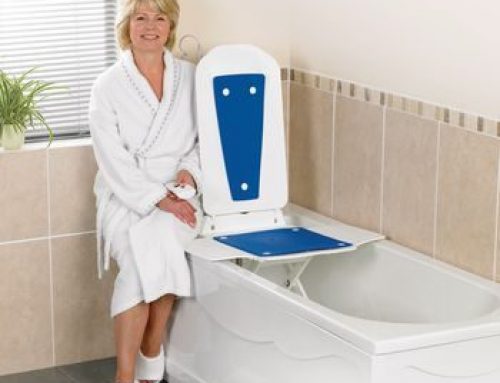According to a 2010 survey by the American Association of Retired Persons (AARP), nearly 75% of respondents (all of whom were aged 45 and older) strongly agreed with the statement “what I’d really like to do is stay in my current residence for as long as possible.” But in order for your loved ones to age at home comfortably, planning ahead is a must. Here are five steps to plan for your parents aging at home:
1. Have a frank talk with your parents. Although it may be uncomfortable, take time to sit down with your parents and have an open, honest discussion about how they want to approach aging. Being on the same page will make the planning process easier, and it will help you avoid uncertainty and even tougher decisions later on. Make sure you cover topics such as whether your parents have a will, what they would like to do if they can’t live on their own, who their doctors are and how to reach them, and how much money they can allocate to aging comfortably. The hardest part is broaching the subject, but doing so will make both you and your parents feel better afterwards.
2. Evaluate the home. Is your parents’ home currently safe for aging at home? For example, are all bedrooms and bathrooms on an upper level of the house? Are countertops at normal height, or are they lowered so that someone in a wheelchair can reach them? Are all areas of the house well-lit? Are hallways and doorways wide enough for power wheelchairs and walkers? Refer to our Blueprint for a Wheelchair Accessible Home for recommended dimensions for doorways, hallways, and even kitchen table specs.
Examining the house with a fine-tooth comb will make planning for aging at home a much more manageable job. For help with the planning and home modification process, consider enlisting the help of a Certified Aging-in-Place Specialist (CAPS), a home builder who’s specially trained to analyze a homeowner’s needs and plan for modifications that are both functional and attractive.
3. Consider your support system and the surrounding community. Will you be assuming primary care for your aging parents, or do you have siblings and other family members nearby who are able to pitch in? Does your family belong to a religious center or other community program that will help with meals, transportation, and other caregiving? Are your parents’ doctors and pharmacies nearby? While you may initially be confident in your ability to care for your parents single-handedly, having others to rely on will help you fight stress if other areas of your life (such as your job or your own family) start to require more time and attention.
Your aging parents will also benefit from being part of a local community, whether it’s a book club or a light aerobics class at a nearby YMCA. Choosing to age at home shouldn’t mean that they’re isolated, and helping facilitate social interactions will help improve your parents’ morale.
4. Make a budget. Having a financial plan for aging at home can diffuse stress and conflicts before they even start to arise. Outline a realistic plan for how much home modifications, in-home care, and more will cost, and stick to the budget so that everyone involved is comfortable with the amount of money being spent on aging at home. Make sure to check and see if your parents are eligible for any benefits; while Medicare doesn’t cover many aging at home modifications, some programs may be able to help in different areas.
5. Purchase any aging at home devices and make home modifications. From stair lifts to bathtub lifts, mobility scooters to portable ramps, there are aging at home products to help with anything you may need so that your parents can age at home comfortably. Also, making home modifications before you actually need them- for example, installing a stair lift before your parent is unable to move between floors- will ensure that you’re prepared for your parents’ future.
Above all, make sure to maintain an open dialogue between you and your parents to facilitate the aging at home process. While it’s an uncomfortable topic to discuss, planning ahead will reassure both you and your parents, and you’ll all feel more prepared for the future by planning smartly. If you have further questions, call us today and we’ll help you devise a strategy for helping your parents age at home comfortably.



Leave A Comment
You must be logged in to post a comment.